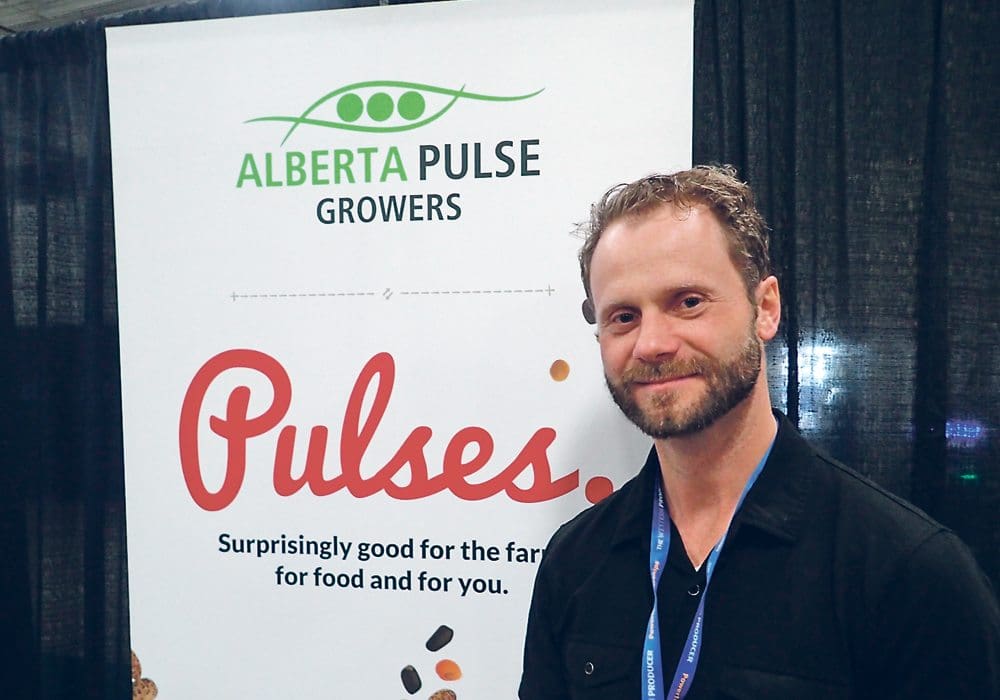CANADA and Australia may be fierce competitors in some world pulse markets, but opportunities exist for them to pool resources in some areas behind crop production and consumption that could assist them both.
That’s the opinion of Alberta Pulse Growers policy and programs specialist Nevin Rosaasen, who will speaking in the keynote session next month at the Australian Pulse Conference on the topic of Australian and Canadian pulses: ‘Commonwealth competitors or scientific collaborators?’
“Collaboration is a long-term approach beginning with communication, followed by co-operation and co-ordination,” Mr Rosaasen said.
“The final step in collaboration represents pooled resources, funds and agreed to goals and outcomes.
“It would be great if Australia and Canada can continue to communicate and cooperate in areas of pulses.”
Mr Rosaasen said agronomic insight was the likely starting point for co-operation.
“Sharing genetics will be more difficult in this day and age, with different seed company interests, and plant breeders’ rights to considers.
“Certainly, novel traits will be of interest to all parties, and represents a starting point for communication.”
Mr Rosaasen said the plant-protein space was another area where Canada and Australia could collaborate.
“Crop-protection products, social license and public trust are other areas which come to mind.”
Mr Rosaasen said clear communication with consumers in relation to production practices, crop-protection products and food safety was an area where farmers and the agricultural sector in general had been floundering.
“In the new age of social media, fake news and online activism, public trust is an area where we all need to do better.”
Shared history, markets
As Commonwealth countries, Mr Rosaasen said Canada and Australia shared some values, historical allies and trading partners.
“However, agricultural exports from both Australia and Canada are at times competing with regards to export markets.”
Mr Rosaasen said sound science, collaboration and institutional capacity would be differentiating factors in maintaining and enhancing market access for both countries in the future, with the post-Brexit United Kingdom being a new entity to consider.
Despite being calendar opposites in terms of production, Australia and Canada tread on each other’s toes on lentils particularly in key markets like India, because growers and traders in both countries often carry tonnage to sell into spikes in the market.
“Green peas form a large portion of pulse trade between the UK and Canada, and chickpeas represent an area of potential growth for Canadian production.
“Canada has committed to sustaining trade with the UK throughout and following Brexit, deal or no deal.”
Chickpea exports of about 1000t per month are the highlight of Australia’s pulse exports to the UK at present.
Mr Rosaasen said chickpeas could regain some of the area they have lost in Canada in recent years if prices rise.
“Chickpea production in Canada peaked nearly a decade ago, with the majority of acres in Saskatchewan.
“Price is the ultimate motivator and, should prices increase, lentil, durum and spring wheat acres could be reduced to make way for more chickpea production.”
Changing times
Canada is a major producer of yellow and green field peas.
Since India has restricted imports of pulses to cope with its own large crop, China has become the largest market for Canadian peas.
China, India, Bangladesh, the US and Pakistan are the top five buyers of Canadian pulses.
Mr Rosaasen said many Western Canadian farmers continued to include pulses in their rotation to reduce their use of synthetic nitrogen.
Tight rotations — one in three years — for peas and lentils have resulted in root rots and pathogens including Aphanomyces.
Mr Rosaasen said Canada had the ability to increase its pulse area.
“Not every farm has pulses in its rotation.”
He said Canada’s canola area has dropped in response to the price impact of the Chinese ban on Canadian canola exports.
“Acreage was only slightly down in canola this past year, yet prices continue to fall.
“There will be more cereal, pea and potentially lentil acres if canola prices remain depressed.
“The cost of production with canola is higher than the alternatives and carries more risk with the higher nitrogen requirements.”




HAVE YOUR SAY